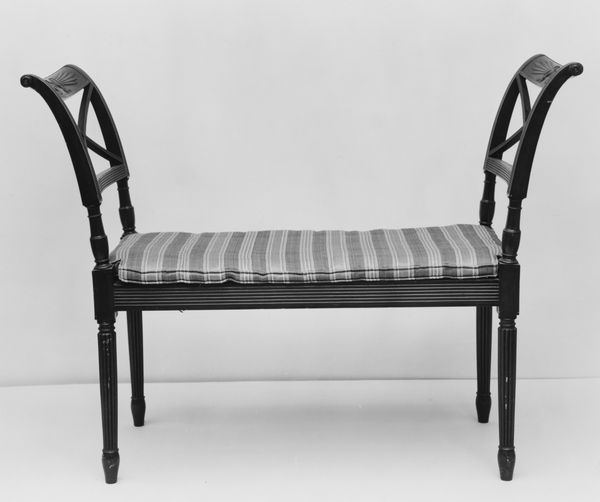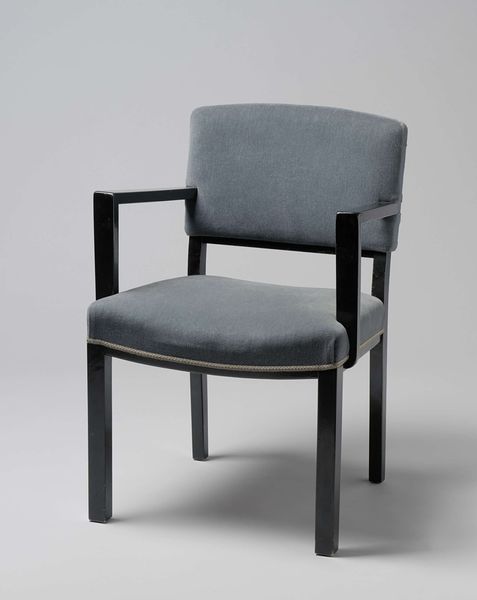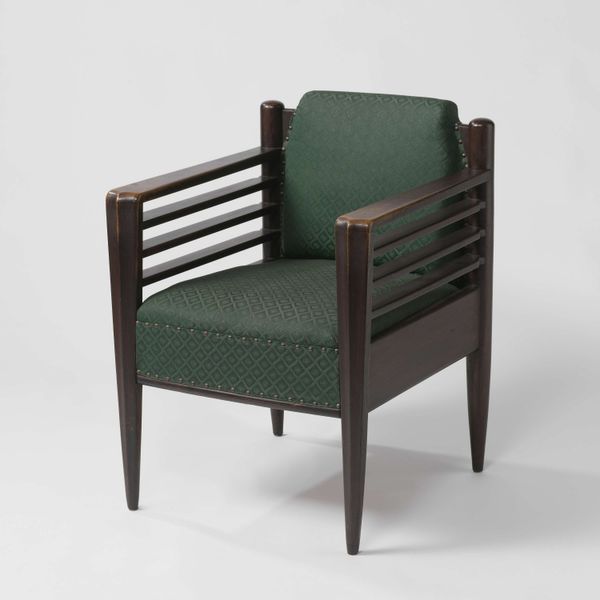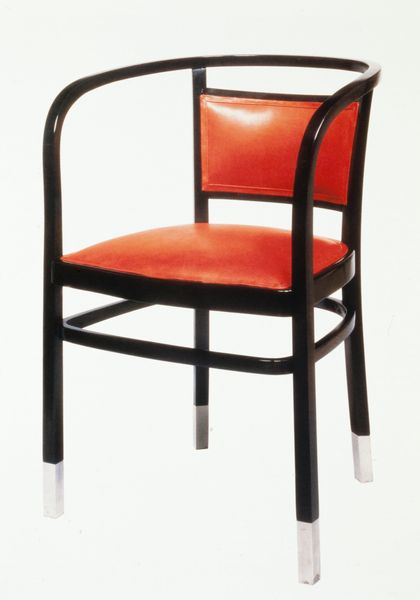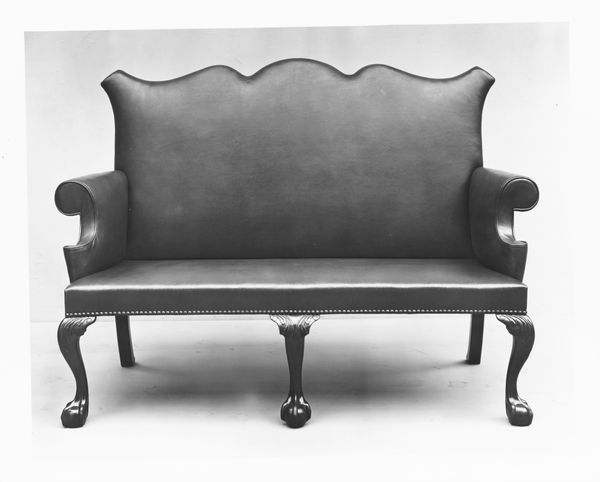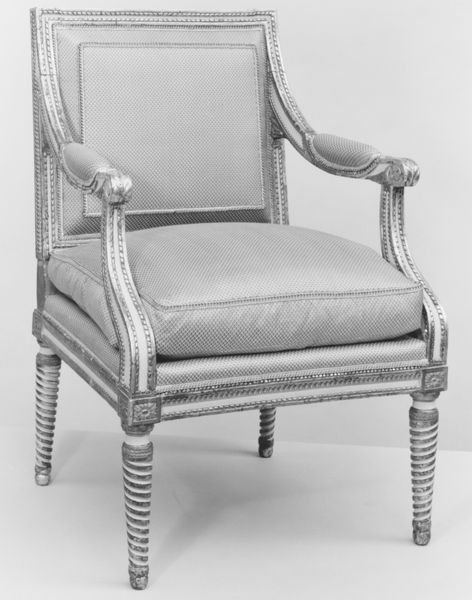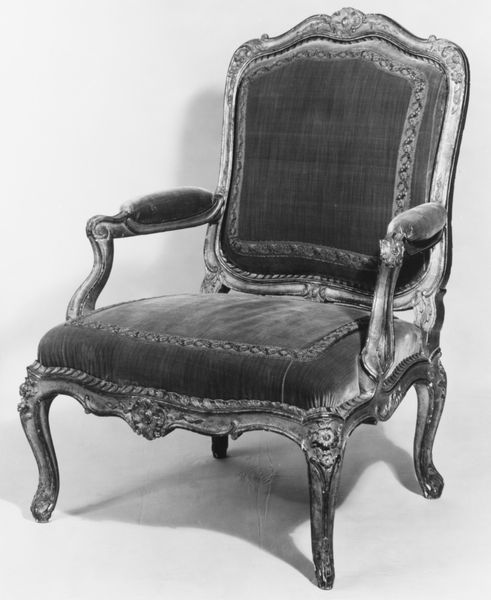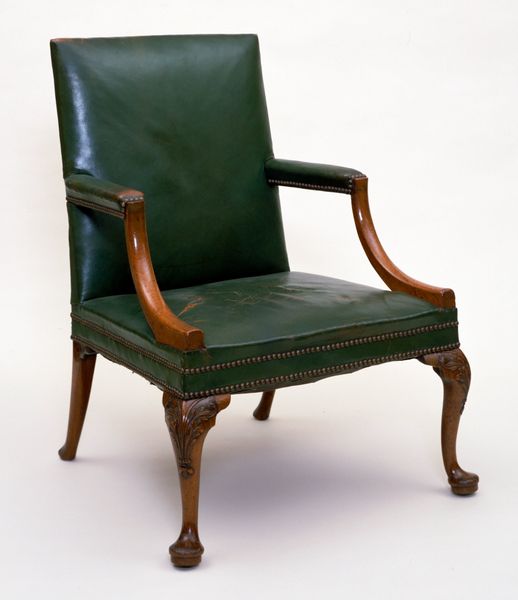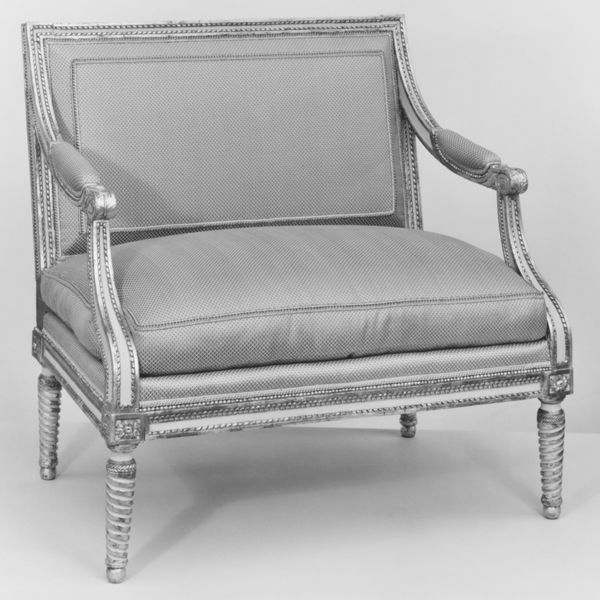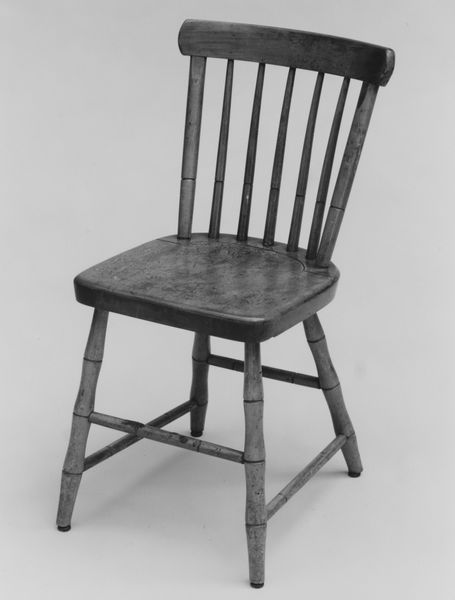
wood, architecture
#
neoclacissism
#
furniture
#
united-states
#
wood
#
decorative-art
#
architecture
Dimensions: 36 1/4 x 24 x 19 1/2 in. (92.1 x 61 x 49.5 cm)
Copyright: Public Domain
Editor: So this wooden Armchair by Thomas Affleck, crafted around 1794, strikes me as surprisingly austere for furniture of that period. How would you interpret its design? Curator: Well, beyond its immediate aesthetic qualities, let's consider the social and political landscape of its time. This Neoclassical style emerged right after the American Revolution, embodying the new republic's ideals of reason and civic virtue. Can we see echoes of power structures within its form? Editor: I suppose its formality speaks to power, and also a conscious effort to break with overtly opulent British styles...almost like a design declaration of independence. Curator: Precisely. The rejection of overt ornamentation, that emphasis on functionality – could that also mirror a subtle discomfort with the aristocratic aesthetics of the pre-revolution era? The reliance on enslaved labor was also deeply embedded within the economies that produced objects like this armchair. Editor: That's a stark and necessary point. The simplicity, then, takes on a more complex meaning when viewed through the lens of who could access or create it, or who might have to clean it and who benefited from this chair's place within domestic life. Curator: Absolutely. By acknowledging those complex, sometimes contradictory narratives, we move beyond just admiring its form to really understanding its place in history. Are there ways it connects to contemporary discussions around labor, consumption, and the ethics of design? Editor: This has really challenged my initial assumptions. I had only considered the design at face value. Now I’m seeing the armchair as a loaded artifact, silently speaking to broader systems of power and privilege. Curator: Excellent. It is a reminder that these objects hold stories that demand critical analysis and understanding to reveal deeper social, cultural, and economic structures of the past, and even their relationship to today.
Comments
No comments
Be the first to comment and join the conversation on the ultimate creative platform.
